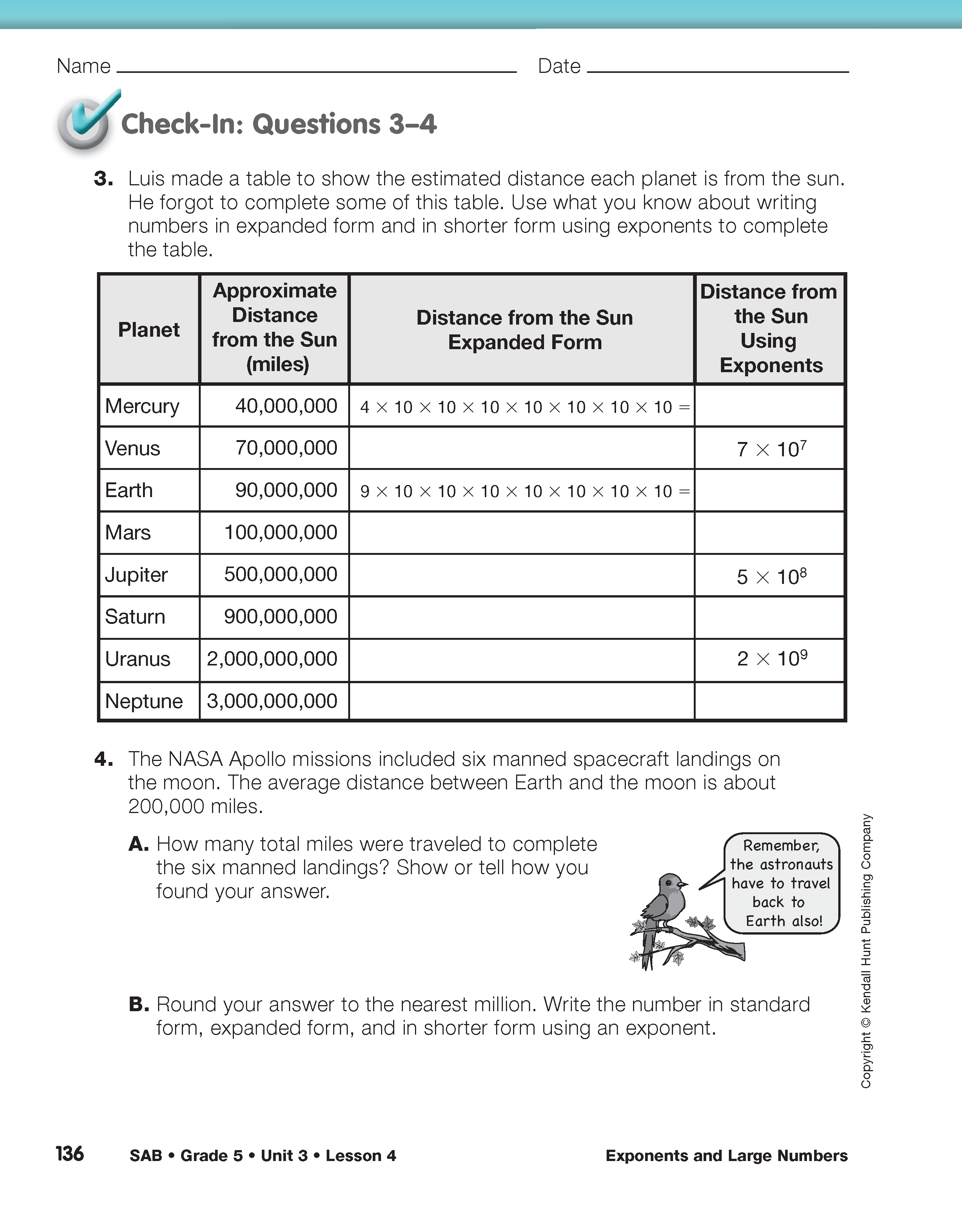This part of the lesson provides practice multiplying large numbers by multiples of ten. Direct students to the Multiply by Multiples of Ten pages in the Student Activity Book. The introduction uses the distance from the earth to the sun, rounded to the nearest 10 million miles, to explore what happens to a number when it is multiplied by a multiple of 10. Have students work with a partner to read the information and to complete Questions 1–2.
After students have had time to work with their partner, ask:
- What do you notice about the digits that follow the 9 on your calculator display? (There are seven digits and all of them are zeros.)
- How many times did you multiply by 10 on your calculator? (seven times) Use what you know about exponents to explain why. (Possible response: Each time you multiply by 10, the product is ten times bigger so there is one more zero in the product. Since you multiply by 10 seven times, there are seven zeros in the answer.)
Ask students to look at the table they completed in Question 2. Ask students to share the patterns they identified.
These or similar prompts can help guide the discussion:
- What do you notice when you look across each row in the table? (The exponent in the first column is the same as the number of tens you multiply by in the second column. This is also the same as the number of zeros in the product shown in the third column.)
- What pattern do you see in the first column of the table? (In each number sentence, the exponent or power of ten increases by one as you move down the column.)
- What do you notice about the number sentences shown in the second column? (As you move down the column, you multiply 9 by one more ten than you did in the previous number sentence. The number of 10s in the number sentence is equal to the exponent in the first column.)
- How do the numbers in the third column change as you move down the column? (Each number is ten times larger than the number in the row above it. For example 900 is ten times larger than 90.)

Calculators and Scientific Notation. Scientific calculators display large numbers by using scientific notation. Other calculators, such as four-function calculators, are not capable of expressing numbers in scientific notation. If the answer to a problem does not “fit” in the calculator's window, i.e., the number has more digits than the display window will allow, the calculator will display an error message.
The number where the calculator begins to give answers in scientific notation varies from calculator to calculator. See Figure 2.
After discussing the table in Question 2, direct students to work independently to complete Check-In: Questions 3–4.
Use Check-In: Questions 3–4 in the Multiply by Multiples of Ten pages of the Student Activity Book to assess students' abilities to write large numbers (to the billions) [E1]; represent numbers using exponents [E5]; and multiply numbers that are multiples of ten represented as powers of ten [E7].
















